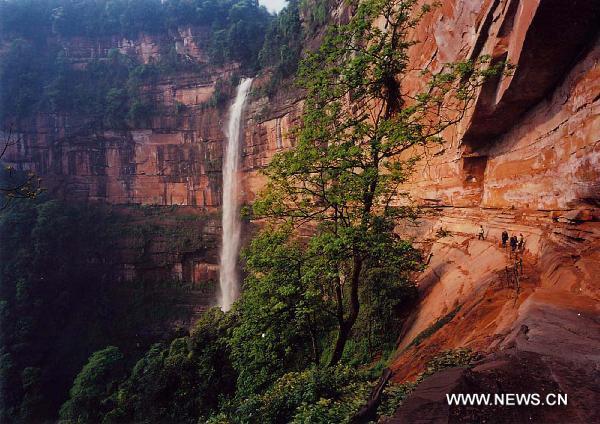The Center of Heaven and Earth
|
|
|
File photo shows the scenery of Danxia Landform in Chishui of southwest China's Guizhou Province. The World Heritage Committee decided to include China Danxia Landform in the World Heritage List at its 34th meeting being held in Brasilia, capital of Brazil, on Aug.1, 2010. The six Danxia landform areas are: Mountain Langshan (Hunan Province), Mountain Danxiashan (Guangdong Province), Taining (Fujian Province), Mountain Longhushan and Guifeng (Jiangxi Province), Chishui (Guizhou Province), Mountain Jianglangshan (Zhejiang Province). [Xinhua/Zhang Shaoming] |
However, their first application attempt failed to qualify at the 33rd session of the World Heritage Committee in 2009.
Xiao Li, an officer with the World Heritage Department of the State Administration of Cultural Heritage (SACH), attributes the failure to mis-communication between two government agencies who simultaneously applied to UNESCO, SACH and the Ministry of Construction, for the same site.
Along with SACH, the ministry this year submitted the Danxia Landform, a grouping of six geological sites in southeast China, for Natural Heritage status.
"Beginning in 2005, countries can only submit one cultural heritage site and one natural site a year," said Xiao.
According to Cathy Nolar, press officer of UNESCO, registration is just the beginning of the process, as the sites on the list are under constant review.
"After that, the country takes responsibility for safeguarding it for future generations. By submitting a site for inscription, a country gives UNESCO and the international community the right to keep an eye on safeguarding efforts, and to have a say on how well they are carried out," said Nolar.
"It is true that inscribing a site attracts more attention to it, and this can be a threat to preserving fragile environments. But this is part of sharing unique cultural and natural sites with the rest of the world. National and local authorities have to find the balance between preserving their unique treasures and making them accessible, and they can get advice on doing that from UNESCO World Heritage Centre experts," she added.
Abbot of Shaolin Temple, Shi Yongxin, said that while the UNESCO decision is a privilege, it adds pressure and responsibility.
 0
0 








Go to Forum >>0 Comments